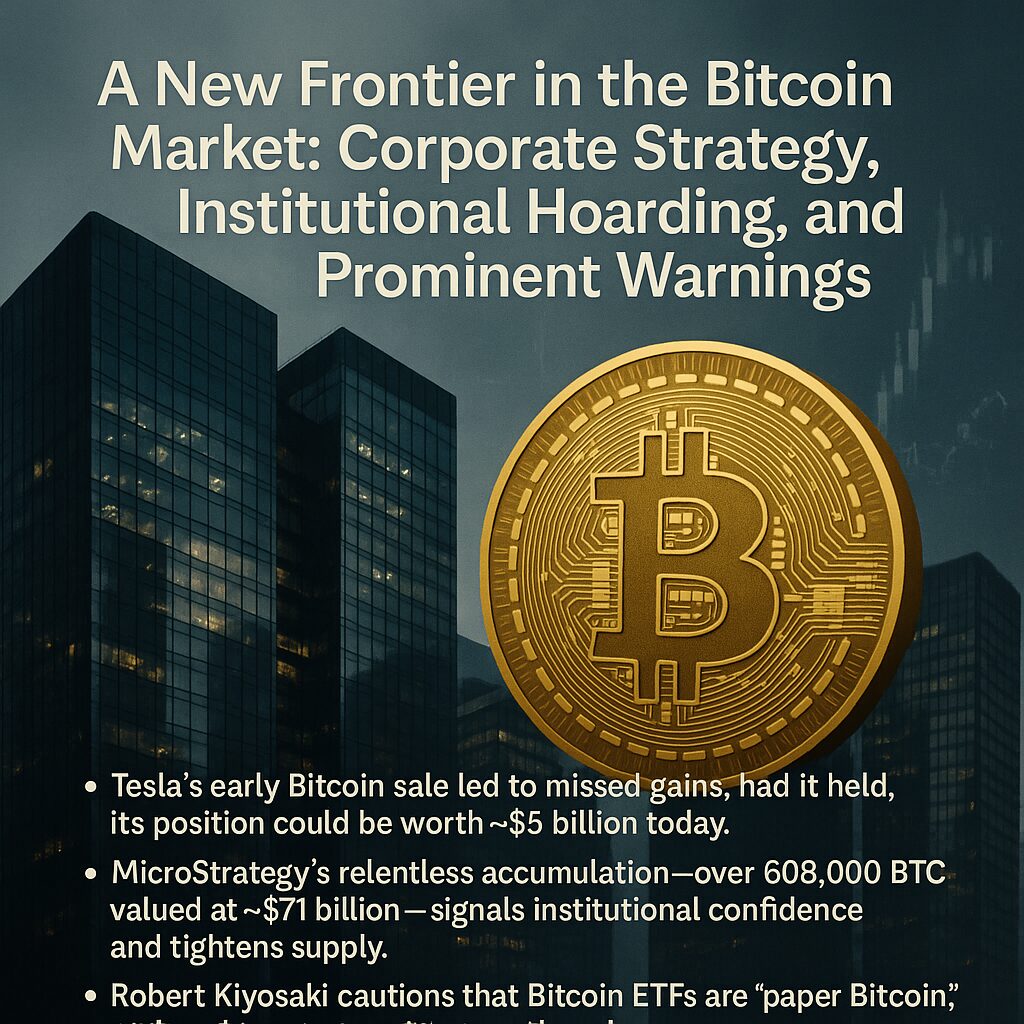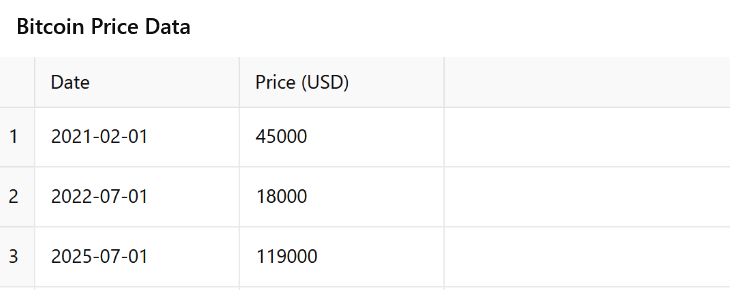
Main Points:
- Tesla’s early Bitcoin sale led to missed gains; had it held, its position could be worth ~$5 billion today.
- MicroStrategy’s relentless accumulation—over 608,000 BTC valued at ~$71 billion—signals institutional confidence and tightens supply.
- Robert Kiyosaki cautions that Bitcoin ETFs are “paper Bitcoin,” urging direct ownership to avoid counterparty risks.
1. Tesla’s “What If?” Moment: $5 Billion of Lost Opportunity
Tesla’s decision to offload 75% of its Bitcoin in mid‑2022 crystallized a strategic trade‑off between liquidity needs and long‑term upside. In early February 2021, CEO Elon Musk announced a $1.5 billion purchase of Bitcoin, driving the price surge that followed. By Q2 2022, amid mounting macroeconomic pressures, Tesla sold roughly $936 million worth of Bitcoin—locking in $284 million of gains—even as Bitcoin had plunged below $20,000.
However, Bitcoin’s rally to approximately $119,000 by July 2025 means those divested coins would now be valued around $5 billion, more than five times the sale proceeds. This “what if” scenario underscores the difficulty corporate treasuries face when balancing volatility risk and potential upside. While Tesla’s sale bolstered short‑term earnings—contributing to a Q2 net income of $1.17 billion—it also meant forfeiting a strategic asset that could have significantly strengthened its balance sheet and bolstered shareholder value over the long run.
Figure 1: Bitcoin Price Trend (February 2021–July 2025)

2. MicroStrategy’s Unwavering Bet: From $9.45 Billion to $71 Billion
Under Michael Saylor’s leadership, MicroStrategy has transformed from a software firm into Bitcoin’s largest corporate treasurer. Between August and September 2023 alone, the company purchased $1.11 billion of Bitcoin, lifting its holdings to ~$9.45 billion. Fast‑forward to July 27, 2025, and MicroStrategy holds approximately 608,000 BTC, with a market value near $71 billion.
This accumulation strategy—financed through preferred‑stock issuances and convertible debt—anchors MicroStrategy’s corporate identity to Bitcoin’s trajectory. The firm’s fourth and largest preferred‑stock offering in 2025 raised $2.5 billion, explicitly to fund further Bitcoin purchases at a 10% initial dividend yield. By positioning its preferred shares as a “Bitcoin‑backed” alternative to short‑duration treasuries, the company has introduced a novel institutional playbook: use traditional capital markets methods to turbocharge digital‑asset exposure.
Figure 2: MicroStrategy Bitcoin Holdings Market Value (September 2020–July 2025)

3. “Paper Bitcoin” Pitfalls: Robert Kiyosaki’s ETF Alert
Renowned author Robert Kiyosaki, famous for Rich Dad Poor Dad, has issued a stark warning: Bitcoin ETFs are “paper Bitcoin” that expose investors to indirect ownership risks. While spot‑Bitcoin ETFs lower entry barriers—eliminating self‑custody complexities and regulatory hurdles—they sever the direct link between investor and asset, introducing counterparty and custody risks that pure coin holders avoid.
Kiyosaki argues that if an ETF issuer faces insolvency or regulatory action, ETF holders could find themselves unprotected despite ETF products claiming to hold real Bitcoin. He labels these products akin to “banksters’ traps” and urges investors to hold “real” coins in personal wallets. His perspective aligns with a broader narrative: as institutional flows enhance liquidity and adoption, they also erect new layers of complexity and potential fragility in the Bitcoin ecosystem.
Conclusion
Tesla’s early exit from Bitcoin illustrates the tension between near‑term corporate priorities and long‑term value capture in a volatile asset. MicroStrategy’s aggressive accumulation highlights the power of institutional conviction to influence market supply and price dynamics. Meanwhile, Robert Kiyosaki’s critique of Bitcoin ETFs reminds investors that ease of access can carry unseen risks. For crypto enthusiasts seeking new assets and higher yields, the evolving interplay between corporate strategies, institutional balance sheets, and retail instruments presents both opportunities and cautionary tales. Ultimately, thorough due diligence—balancing direct ownership, counterparty exposure, and strategic timing—remains essential in navigating the next chapter of Bitcoin’s ascent.

